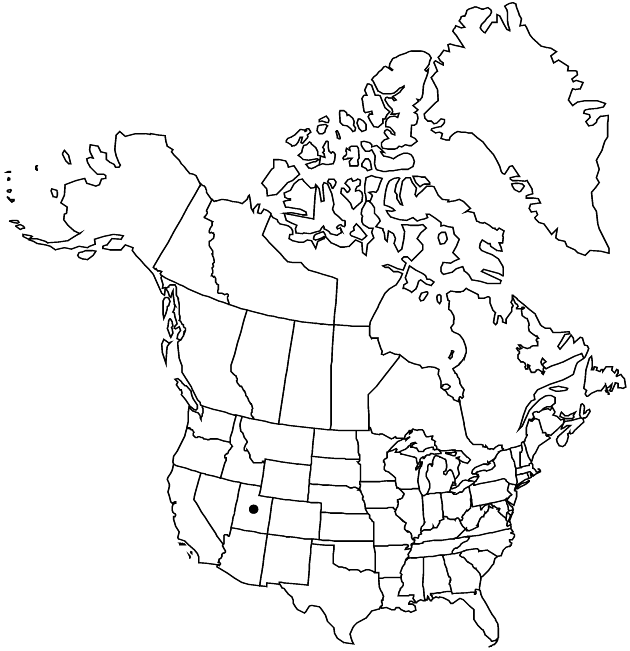Packera musiniensis
Sida 21: 1643. 2005.
Perennials, 5–10 cm; ± rhizomatous (bases loosely branched, elongated, horizontal to ascending). Stems 1 (sometimes branched from bases), densely white- or gray-tomentose. Basal leaves petiolate; blades oblanceolate, 20–30+ × 5–13+ mm, bases tapering, margins pinnatifid to crenate. Cauline leaves gradually reduced (sessile; proximal and mid nearly equaling basals, distals bractlike). Heads 3–15+ in corymbiform arrays. Peduncles ebracteate, tomentose. Calyculi 0 or inconspicuous. Phyllaries 8–13, yellow-green to purple (or with purplish midstripes), 8–9.5 mm, sparsely tomentose (apices rounded). Ray florets 0 or 1; corolla laminae ca. 6 mm. Disc florets not seen. Cypselae not seen (reported to be glabrous). 2n = 46.
Phenology: Flowering mid Jul–mid Aug.
Habitat: Subalpine and alpine ridges, talus or scree slopes, barren areas on Flagstaff limestone
Elevation: 2900–3300 m
Discussion
Of conservation concern.
Packera musiniensis is a high-elevation dwarf species; its affinities within Packera are still uncertain. Welsh believed it to be allied to P. cana or P. multilobata, or both.
Selected References
None.
